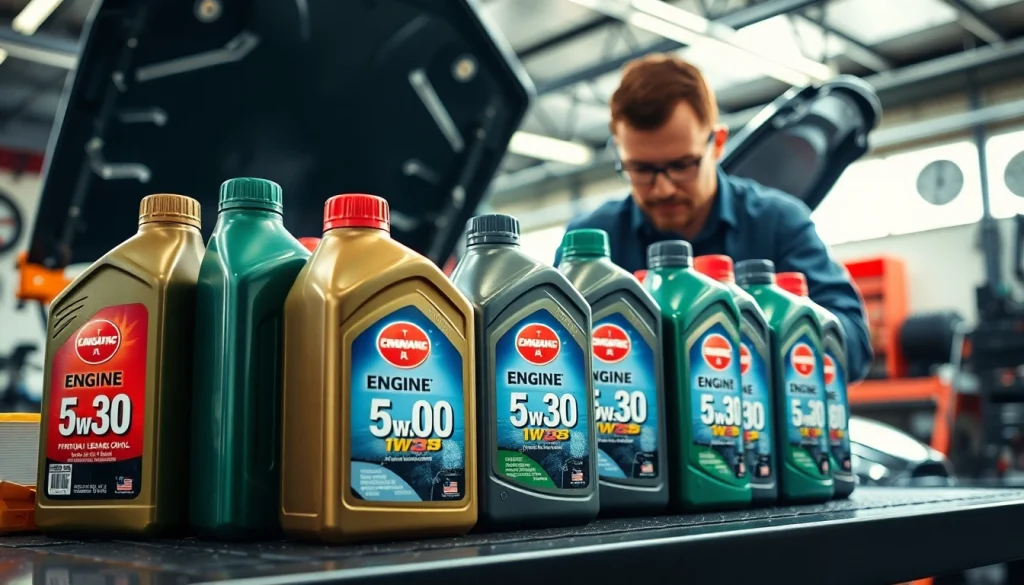Essential Guide to Choosing the Right Engine 5W30 Oil for Your Vehicle

Understanding Engine 5W30 Oil
Choosing the right oil for your vehicle’s engine is crucial for maintaining performance and longevity. Among the various options available, engine 5W30 oil stands out as a popular choice due to its versatility and efficiency. This article will delve deep into what 5W30 oil is, its benefits, applications, and more, offering detailed insights to help you make the best choice for your vehicle’s needs.
What is 5W30 Oil?
5W30 motor oil is a multi-grade oil characterized by its viscosity ratings of 5 in cold temperatures and 30 in hot conditions. The “W” represents winter, indicating that this oil performs well even at lower temperatures. This oil is designed to provide a stable and protective lubricating film on engine parts, ensuring optimal performance and protection under various driving conditions.
Benefits of Using 5W30 Oil
The use of 5W30 oil offers several advantages:
- Versatility: This oil is suitable for a wide range of vehicles, making it a go-to option for many drivers.
- Improved Engine Protection: Engine wear is minimized with 5W30 oil due to its superior lubrication properties, which help reduce friction between components.
- Temperature Stability: With its multi-grade nature, 5W30 oil maintains effective lubrication at both low and high temperatures.
- Enhances Fuel Efficiency: Proper lubrication translates to less energy required for engine operation, ultimately resulting in better fuel economy.
Common Applications for 5W30 Oil
5W30 oil is widely applicable in various vehicles, including light-duty trucks, motorcycles, and passenger cars. Many manufacturers recommend this viscosity for their models, making it an industry standard for numerous makes and models. Additionally, it is often found in both gasoline and diesel engines, underscoring its versatility.
Types of Engine 5W30 Oil
Synthetic vs. Conventional 5W30 Oil
When choosing 5W30 oil, you will encounter two main types: synthetic and conventional. Here’s a comparison of their advantages:
- Synthetic Oil: Provides superior performance in terms of cleanliness and temperature stability. It is engineered for enhanced wear protection and extends the interval between oil changes.
- Conventional Oil: Typically less expensive and suitable for older vehicles that operate under normal conditions. It may require more frequent changes compared to synthetic.
Choosing between synthetic and conventional 5W30 oil largely depends on your vehicle’s specifications, driving habits, and climate conditions.
High Mileage and Specialty Formulas
High mileage 5W30 oils are specially formulated for vehicles with over 75,000 miles. They contain seal conditioners to prevent leaks and additives to reduce engine wear. Specialty formulas may also cater to specific needs, like racing or heavy-duty applications, ensuring the oil performs optimally under extreme conditions.
Oil Compatibility with Engine Types
5W30 oil can be used in a variety of engines, including engines that specify the need for this viscosity and those operating under moderate climates. However, it’s essential to follow your manufacturer’s recommendations. Some engines may require specific add-ins or have particular needs that synthetic or high-mileage blends can fulfill.
How to Choose the Right Engine 5W30 Oil
Considerations for Climate and Driving Conditions
Your geographical location and typical driving scenarios can significantly influence your choice of oil. In warmer climates, a synthetic 5W30 oil may provide better protection against engine wear. Conversely, if you live in a colder climate, you should ensure that your chosen oil performs adequately at low temperatures.
Reading Oil Labels and Specifications
Understanding oil labels is crucial when selecting the right 5W30 oil. Look for the API (American Petroleum Institute) service grade and ensure it matches your engine’s requirements. Additionally, pay attention to performance ratings such as ILSAC (International Lubricant Standardization and Approval Committee) that denote fuel economy and protection standards.
Expert Recommendations and Reviews
Consulting expert reviews and recommendations can provide valuable insights into the best brands and formulations of 5W30 oil available. Online platforms, automotive forums, and customer feedback can guide your selection process and offer real-world performance evaluations.
Changing Your Engine Oil: Best Practices
Step-by-Step Oil Change Procedure
Changing your engine oil is an essential maintenance task that can be done with relative ease. Here’s a simple step-by-step guide:
- Gather all necessary tools and materials, including new oil, a filter, an oil pan, and tools to remove the drain plug.
- Warm up the engine briefly to thin out the oil, making it easier to drain.
- Turn off the engine and ensure it’s cool to the touch, then secure the vehicle on a level surface.
- Remove the drain plug and allow old oil to drain completely.
- Replace the oil filter using an oil filter wrench.
- Replace the drain plug and fill the engine with new 5W30 oil.
- Check the oil level with the dipstick and adjust as necessary.
- Start the engine and check for leaks. Dispose of the old oil responsibly at a recycling center.
Tips for Safe and Efficient Oil Disposal
It’s critical to dispose of used oil properly to minimize environmental impact. Most automotive shops and recycling centers accept used oil. Always store it in a sealed container and avoid pouring it down drains or on the ground.
When to Schedule Regular Oil Changes
Regular oil changes are vital for engine health. Depending on whether you use conventional or synthetic oil, intervals may vary. Generally, conventional oils require changes every 3,000 miles, while synthetic options can be effective for 5,000 to 7,500 miles, or longer under optimum conditions. Always consult your vehicle’s owner manual for specific recommendations.
Performance and Maintenance Tips
Maximizing Engine Life with Proper Oil Use
To maximize your engine’s lifespan, ensure that you choose the right oil and follow the recommended change intervals. Regular inspections for leaks and oil clarity also ensure ongoing protection. Pay immediate attention to any changes in engine performance, which may signal underlying issues.
Signs of Oil Degradation and When to Act
Monitor your oil for signs of degradation, including a burnt smell, debris in the oil, or significant changes in viscosity. If you notice any of these symptoms, it’s time for an oil change.
Understanding Oil Change Intervals for 5W30
Modern engines and oils are designed to handle longer intervals between oil changes, thanks to advanced formulations and engine technologies. Nevertheless, periodic inspection and adherence to change schedules based on driving conditions remain crucial to maintaining engine performance.






